Judge vs. Governor
I was wondering if you have compared the Taurus Judge to the Smith & Wesson Governor, and if you did, what were the results? — Bob
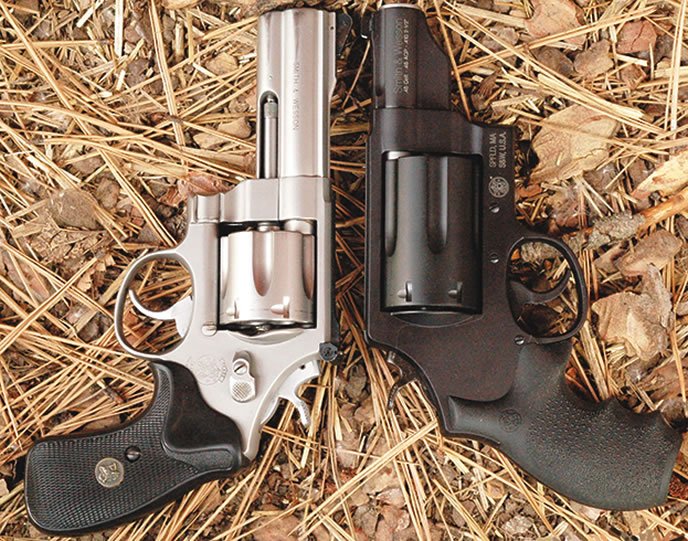
Ray Ordorica has tested both the Taurus Judge and S&W Governor. To find the stories, go Gun-Tests.com and enter “Judge” and “Governor” in the search window in the top-right corner to find the results. Or consult the August 2009 issue for “Judging the Judge: A Viable Self-Defense Revolver for You?” and the August 2011 issue for “‘Judging’ the Governor: We Pit Taurus and S&W Wheelguns.” In the latter head-to-head, we said of the Governor, “The costly scandium-alloy frame is perfectly finished inside and out, and the guts of the gun look like classic S&W stuff, top-notch work throughout. For what you get we rate the gun an A-. The slow rifling twist took a toll on the accuracy of the normal ammo, but sure helped the shot patterns. If you seriously need good shot patterns, this gun gave superior results to what we got from the Judge, but it lost out in overall accuracy, and to some extent, velocity as well.” Of the Judge in the same report, we said, “We generally preferred the Taurus Judge over the Governor with its lighter weight, better balance, and better accuracy. But we much preferred the shot patterns from the S&W Governor. If we had serious uses for a 410-caliber handgun, we’d get the Governor. But if we wanted to shoot shotshells only occasionally and the fast spread was not a problem, and if we wanted a good “carry” gun for the 45 LC that provided superior accuracy and greater velocity than the Governor, the Judge would be our first pick.” — Todd Woodard

Air Rifle or Suppressed?
Please recommend the most powerful/accurate pellet gun to shoot pests in and around stables. The targets are rats, starlings, etc. I would be completely satisfied to shoot accurately at 50 yards. Also, 100 feet might be enough. Horses and riders won’t tolerate the noise of gunfire. And I don’t want holes in my buildings at the horse farm. Also, I probably need a scope on account of 60-year-old eyes.
— Woody
Sorry, we haven’t done much airgun testing, but Roger Eckstine did one comparison in the March 2009 issue, “First-Ever Airgun Shoot-Off: Gamo, Walther, and Norica.” For this use, the Gamo Whisper Deluxe 611006754 is probably the best bet. We said of the Gamo air rifle (below): “The Whisper Deluxe was quiet enough to be used with minimal hearing protection. It was physically easy to operate and the pellets were the most economical. The trigger was a bit long, but accuracy was very consistent and it looked great.” Also, you could go suppressed with subsonic ammo. We haven’t done a head-to-head on it, but a suppressed subsonic rifle, such as an internally suppressed Ruger 10/22, may be quieter at the muzzle than a supersonic air rifle. 22 LR shotshells are fairly quiet as well, and would also solve the pass-through problem. But don’t shoot them suppressed because of the danger of baffle strikes.
Ray Ordorica added, “I have used an RWS Diana Model 48 for many decades. It gives 1100 fps and shoots through heavy steel barrels with ease. Accuracy is also exceptional, with one-hole potential at 15 yards. It is a side cocker and is drilled and tapped for scope mounting. Note that mounting a scope on an air rifle is not a simple task. The air rifle mechanism can easily move a scope or destroy it if the mounting is not well done and the scope up to the task. — tw
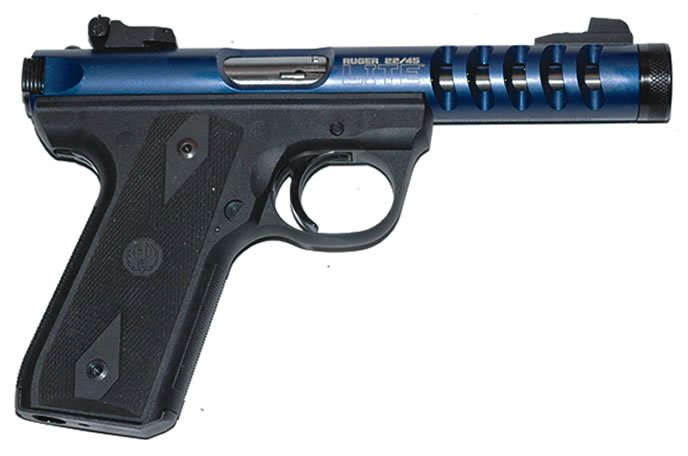
Re “Three Trail Companions We Like,” May 2015
Enjoyed your article on Trail Companions very much. I recently purchased a Ruger 22/45 Lite Mk3 with a fluted barrel, and though I only have a couple hundred rounds through it, I like it a lot. Just one question… Who the hell is Buck Rogers? Just kidding. Keep up the good work.
— Rocky
And Reader George B. added, “Thanks for the leads on the Mora knife and Scow Sheath.” — tw
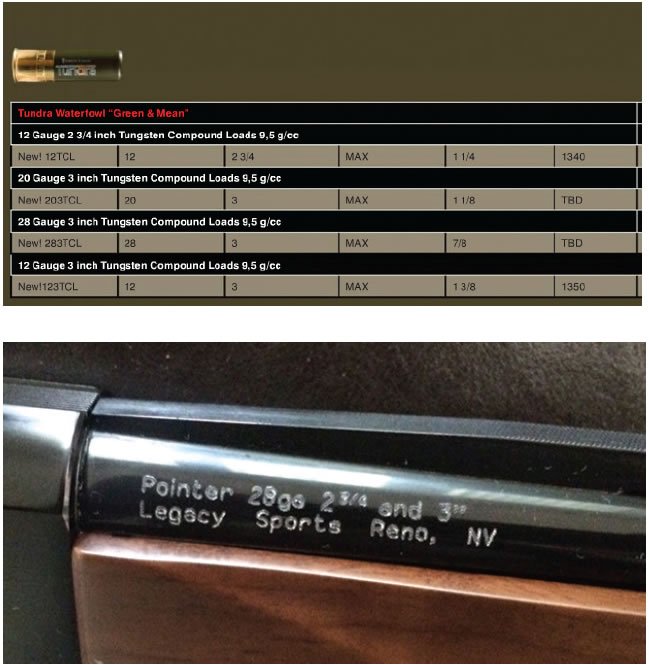
Re “28-Gauge Semi- Automatics: Legacy Sport Versus Beretta,” May 2015
I have subscribed and read your magazine for years and love it. After reading this shotgun article, I was surprised to see the Legacy 28 gauge had a 3-inch chamber. I am getting old and may have missed the announcement of the 3-inch 28-gauge shell. It would be great if you could do a compare-and-contrast article on all the different 28-gauge 3-inch shells, and maybe what other guns are chambered for the new 3-inch 28-gauge shells. I know the 12 and 20 gauges and .410 bore all are available in 3-inch shells — so what’s next, a 3-inch 16 gauge?
Fiocchi loaded its premium Tundra nontoxic label in a 3-inch 28 gauge in 2010. It is listed on page 34 of the 2010 catalog as the 283TCL stock number, as the graphic below indicates. The 3-incher came in max-dram loads with Nos. 4, 5, and 6 tungsten shot in 7⁄8-ounce shot charges. Apparently, the 283TCL was loaded as late as 2012, but we can’t find any citations for it later than that. We were unable to find any 3-inch 28-gauge shells to test, so the chamber length didn’t have an impact on the test results.
Roger Eckstine reported accurately what the chambering was, as the chamber markings on the shotgun show below. We asked Legacy Sports why the gun was chambered for 3-inch shells, and apparently it was a mistake. — tw
Future Tests
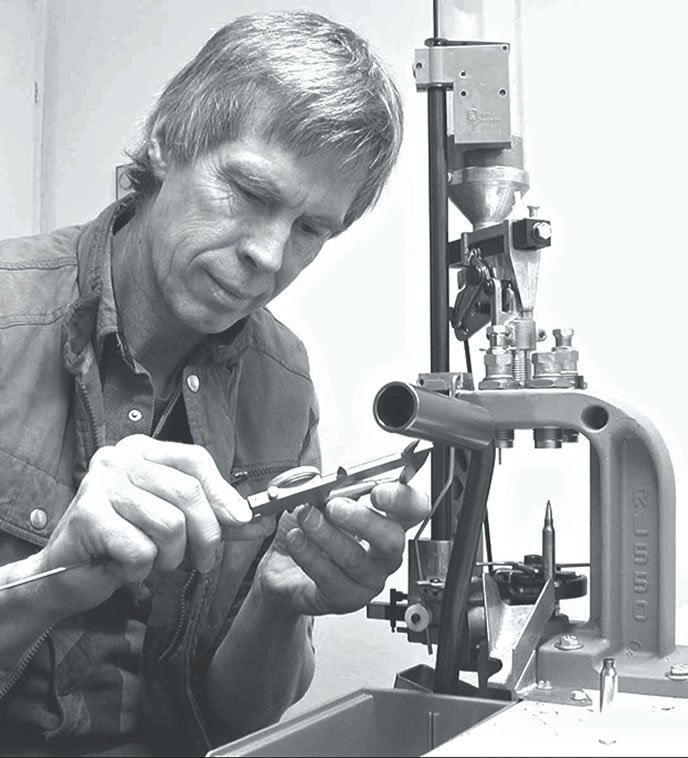
Something to think about for future editions would be a review of reloading equipment and accessories. In particular, I would love to see a review of several of the more popular progressive reloading presses made by Dillon, Hornady, Lee, RCBS, etc. I’m pretty sure that other readers would be interested in the results.
— JRC
Thanks, JRC. A head-to-head between Dillon and Hornady presses has been assigned. Our last treatment of these devices was in the March 2000 issue, and those models are still available as used items and might be worth bidding on at GunBroker.com or some other site. Of the three presses tested, Ray Ordorica wrote of the Dillon RL 550B, $1,070 (as tested at the time): “Buy It. If the shooter can’t come up to the full cost of our test setup, or doesn’t need to swap calibers in a big hurry, we recommend omitting one or two of the $55 powder measures, the $33 low-powder sensor, the $26 roller handle, the $33 “strong mount,” and the $27 bullet tray, all of which came with our $1,070 setup. We highly recommend the spare parts kit ($11) and a couple of spare primer tubes ($4.20 each) so you can keep on cranking out ammo.” Both the Lee Load-Master, $320, and the Hornady Lock-N-Load AP (Automatic Progressive), $350, earned Conditional Buy recommendations, which would probably translate into C grades today. — tw
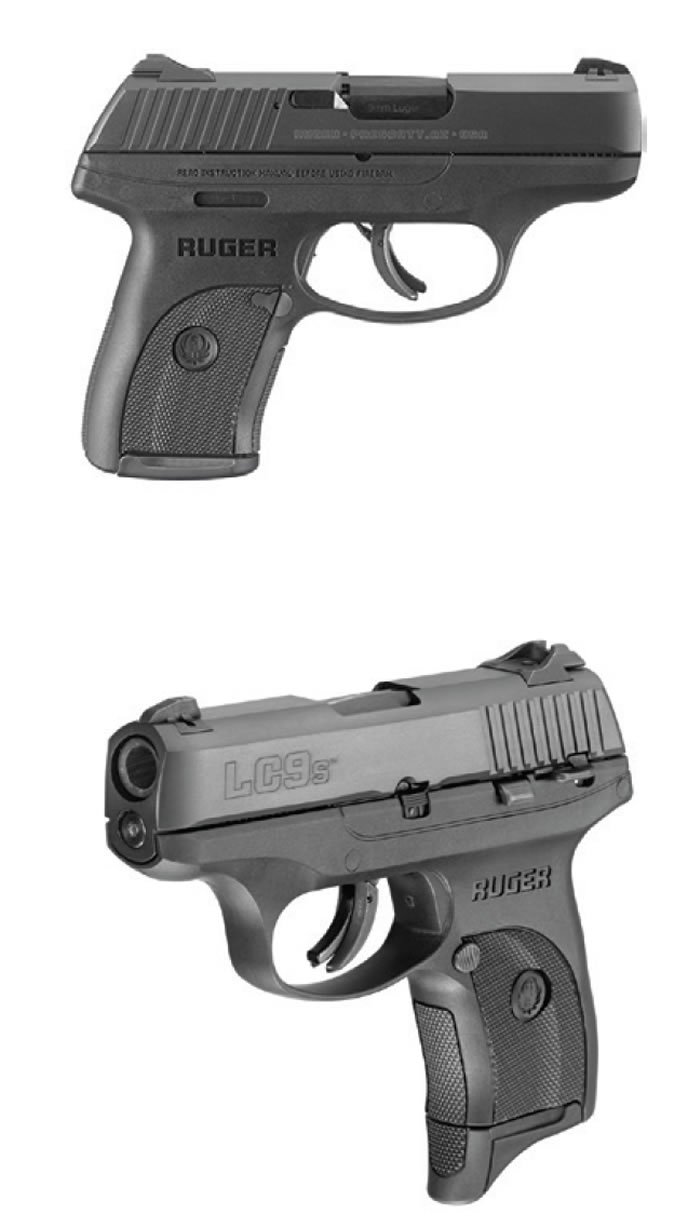
Re “9mm Subcompact Shoot-out: Nano, LC9s, and the XD-S 3.3,” February 2015
I’ve been reading your magazine for about 15 years and like it a lot. I was glad to see this article on the 9mm subcompacts. Literally days before I got to read the article, I traded my years-old LC9 for a new LC9s. I’m an old dude and losing some of the strength in my hands. With my older LC9, my trigger finger got tired and a little sore after about three magazines at the range.
The striker-fired LC9s is a great improvement. You mentioned the Ruger being taller than the Beretta or Springfield, but you didn’t mention that the Ruger came with both the short and extended baseplates for the magazine. The picture of the Ruger that you put next to its overall dimensions shows the shorter baseplate, which puts it in the same height range as the other two. For a more direct comparison, the picture of the three guns side by side should have had the shorter base plate on the Ruger magazine, which would have also had a two-fingered grip, the same as the other two guns. I like a three-fingered grip for better control, so I use the extended baseplates on my magazines.— James
You’re right — we showed both baseplates, but didn’t list different heights for them. The extended floorplate adds about three-quarters of an inch to the frontstrap length. The advantage of the removable baseplate is that the owner can tailor the gun’s grip height according to what he or she wishes to have — the shortest carry package possible or an easier-to-shoot grip. — tw
Kel-Tec P32 Pistol
As a new reader, I researched the tests on the Kel-Tec P32 Auto, which I bought about a year ago. This little pocket pistol is ideal and fits nicely in my lower cargo pants pocket. There are two issues about it I want to bring to your attention. As with most small pistols, the slide is very stiff, so I would not in an emergency hope to chamber a bullet because I’m not sure I could successfully do so quickly. Knowing this, I decided to keep a bullet chambered. However, this creates another problem. There is no safety on this pistol.
— Charles
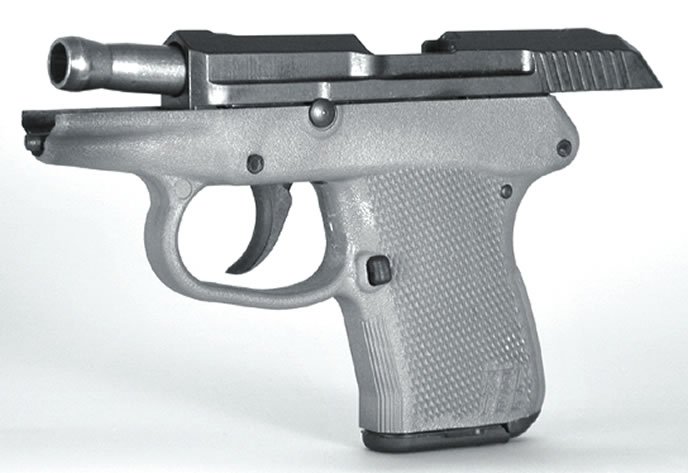
Yes, that pistol in 32 ACP, tested in the October 2001 issue, is bare-bones. At the time, we said, “Of our three test guns, the Kel-Tec P32 is by far the lightest, smallest, easiest to conceal and operate. The gun is ultra lightweight at 9 ounces. To load the chamber, the slide must be pulled back manually as there no exterior slide lock. There are no levers to operate beyond the trigger itself. At rest the hammer is blocked and can only be set free by actually pulling the trigger.”
And in the conclusion and recommendation, “Many people are looking for the least expensive handgun, and in some cases that’s foolish. Not here. This pistol delivered everything it said it would. If you only need the basics of DAO and plastic is OK, then this is worth the dollars.” — tw





























